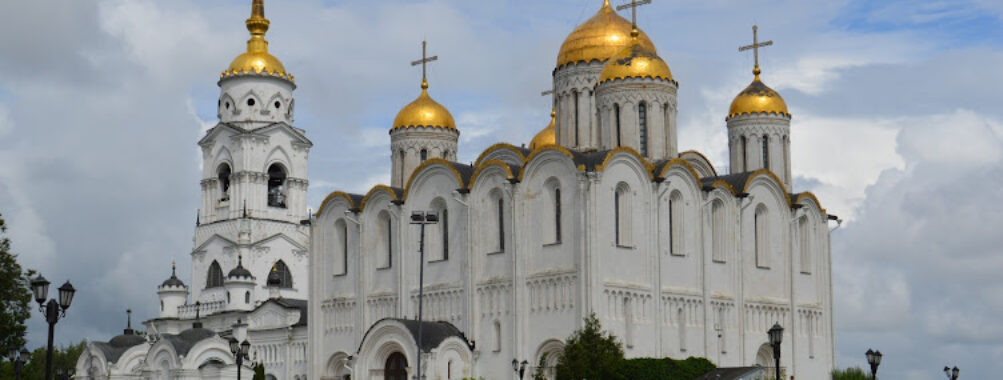
Vladimir-Suzdal Museum-Reserve
“`html
Table of Contents
Description
The Vladimir-Suzdal Museum-Reserve is one of those rare places that feels like stepping into a living history book. Spread across the towns of Vladimir, Suzdal, Bogolyubovo, and Gus-Khrustalny, it’s not just a single museum but rather a collection of 60+ architectural monuments, churches, monasteries, and historical buildings dating from the 12th century all the way up to the 20th. Imagine walking through centuries of Russian history in just a few hours—that’s the kind of experience you get here. The reserve is recognized as one of the largest museum complexes in Russia, and it’s easy to see why it draws travelers from all over the world.
What I personally love about this place is how it blends grandeur with intimacy. You’ve got jaw-dropping medieval cathedrals with golden domes that catch the sunlight in ways that make you stop mid-step, but then you also stumble upon smaller wooden houses or quiet courtyards where you can just sit and soak in the atmosphere. And yes, while most people rave about the UNESCO-listed monuments (rightfully so), I found the little details—like the carved wooden doors or faded frescoes tucked away in corners—to be just as memorable.
Now, to keep it real: not every visitor walks away blown away. Some folks complain about the signage being a bit sparse in English, or that it can feel overwhelming because there’s simply so much to cover. But for the most part, travelers leave with glowing impressions, and I’d argue it’s one of those places that rewards curiosity and patience. If you’re the kind of person who enjoys wandering off the main path and piecing together stories from the past, this museum-reserve will absolutely charm you.
Key Features
- Over 65 architectural monuments ranging from medieval cathedrals to 19th-century estates
- UNESCO World Heritage Sites including the Assumption Cathedral and the Cathedral of Saint Demetrius
- Exhibitions covering Russian icon painting, medieval frescoes, and decorative arts
- Open-air sections with traditional wooden architecture and folk heritage
- Family-friendly atmosphere with plenty of space for kids to explore
- Restroom facilities available on-site (though no dedicated restaurants)
- Authentic glimpse into Russian Orthodox culture and medieval craftsmanship
Best Time to Visit
If you ask me, the best time to visit is late spring through early autumn. May and June are especially beautiful because the weather is mild, the fields around Suzdal are green and blooming, and you don’t yet have the peak summer crowds. July and August can be busy with both Russian and international tourists, but the long daylight hours make up for it—you can explore until late evening without feeling rushed.
Winter, though, is another story. It’s cold, yes, but there’s something magical about seeing the onion domes dusted with snow and hearing the crunch of your boots on frozen ground. The museums are heated, so you won’t freeze inside, but do bundle up if you plan to wander outdoors. Personally, I went once in February, and while my toes were numb, I’ll never forget the sight of the white-stone cathedrals glowing against a pale winter sky. If you’re after atmosphere and don’t mind the chill, winter is unforgettable.
How to Get There
Reaching the Vladimir-Suzdal Museum-Reserve is surprisingly straightforward if you’re coming from Moscow. Trains from Moscow’s Kursky Station to Vladimir take about 1.5 to 2 hours on the high-speed line. From Vladimir, Suzdal is just a short bus or taxi ride away—roughly 30 kilometers. If you’re more of a road-trip person, driving from Moscow takes around 3 to 4 hours depending on traffic, and the route isn’t too complicated.
Once you’re in Vladimir or Suzdal, most of the monuments are within walking distance of each other, especially in Suzdal where practically every street corner has something historic to see. That said, if you want to cover multiple towns in a single day, hiring a local guide or driver is worth considering. I did this on my first visit, and honestly, it saved me a lot of time and hassle. Plus, locals often know little stories or legends about the buildings that you won’t find in a guidebook.
Tips for Visiting
First things first: wear comfortable shoes. This is not the kind of place where you’ll be sitting much—expect to walk, climb, and wander through cobblestone streets and grassy paths. I made the mistake of wearing new boots once, and let’s just say I still remember the blisters more vividly than some of the frescoes.
Bring snacks and water. There aren’t many food options directly inside the museum-reserve, and while Suzdal does have charming cafés, you’ll be grateful for a quick bite if you’re in the middle of exploring. Also, photography is usually allowed, but be respectful—especially inside churches. Some areas prohibit flash, and in a few cases, photos aren’t permitted at all.
Another tip: don’t rush. People often try to squeeze Vladimir and Suzdal into a single day trip from Moscow, but honestly, that’s a bit of a crime. To really appreciate the vibe, give yourself at least two days. Spend one day in Vladimir exploring the grand cathedrals and another in Suzdal wandering through its open-air museum and monasteries. If you can, stay overnight in Suzdal—it’s quieter in the evenings, and you’ll get to see the town without the day-tripper crowds.
Lastly, keep an open mind. The museum-reserve isn’t just about ticking off famous landmarks; it’s about feeling the weight of history in the walls, hearing echoes of old chants in the churches, and imagining what life was like centuries ago. And that, in my opinion, is what makes the Vladimir-Suzdal Museum-Reserve such a special stop on any Russia itinerary.
“`
Location
Places to Stay Near Vladimir-Suzdal Museum-Reserve
Find and Book a Tour
Explore More Travel Guides
No reviews found! Be the first to review!